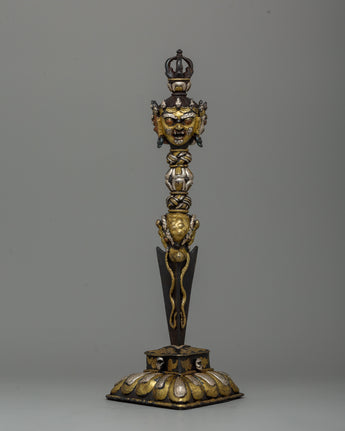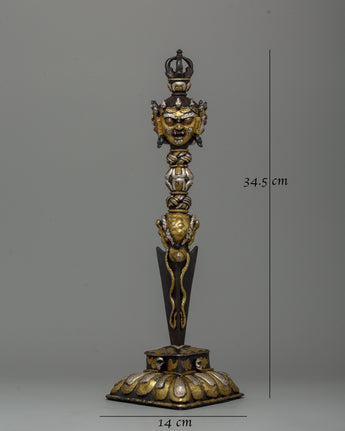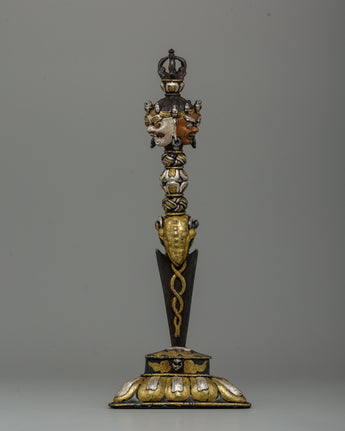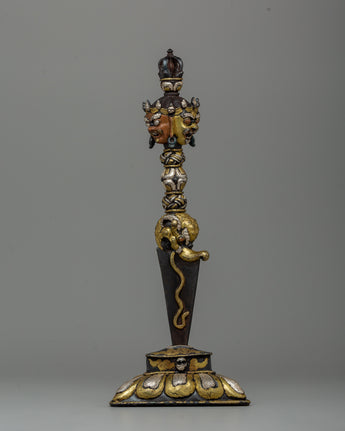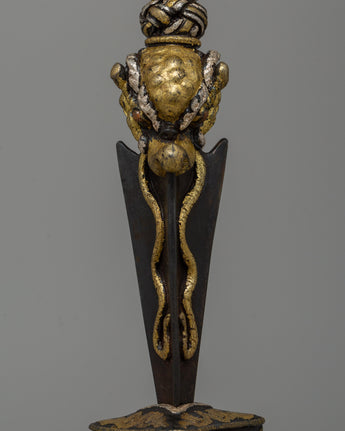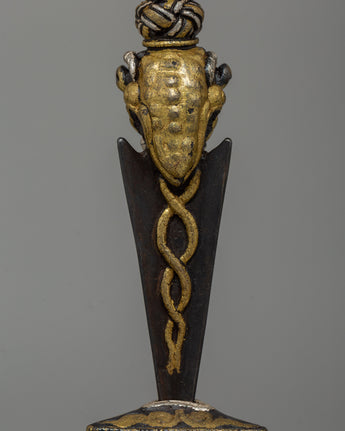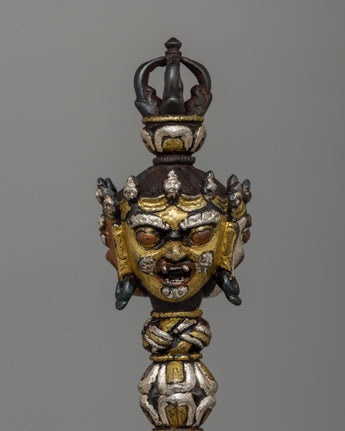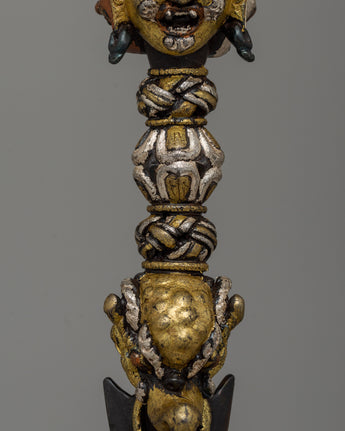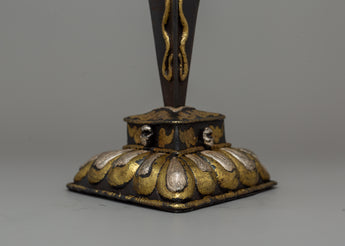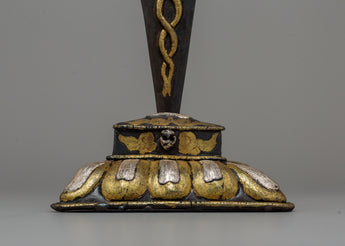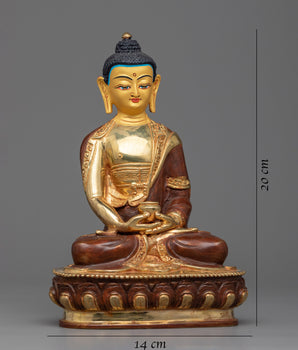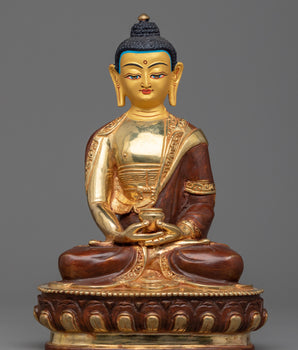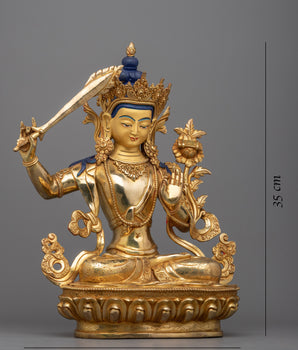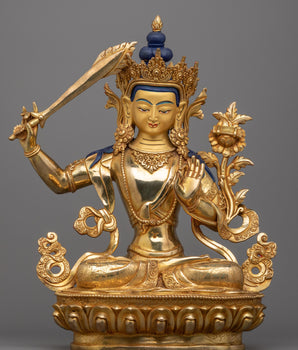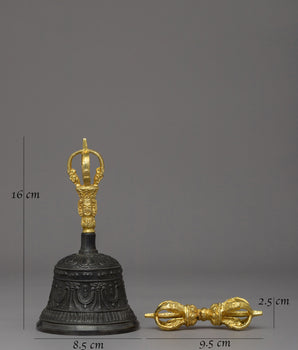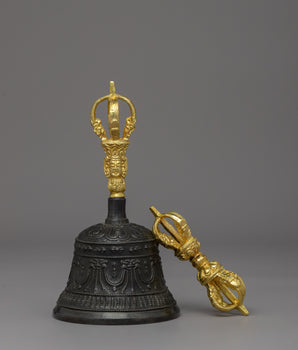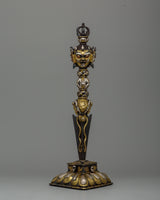
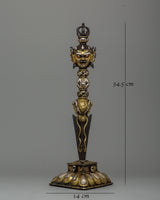
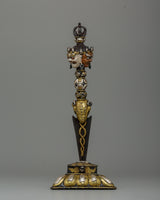
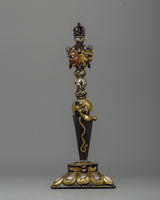
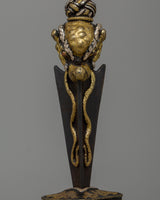
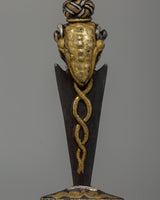
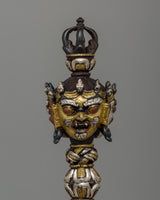
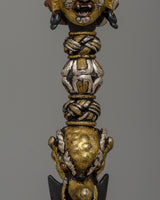
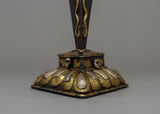
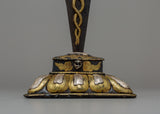
Handcrafted Iron Phurba Dagger | Vajrakila for Meditation Energy Cleansing

100% AUTHENTIC

HANDMADE

FREE SHIPPING
Handcrafted Iron Phurba Dagger - Vajrakila for Meditation & Energy Cleansing
--------------------------------------------
Size: 34.5 cm(Height) x 14 cm(Width)
Weight: 1.546kg
Materials: Iron Body, Copper, Brass Inlay, Silver inlay
--------------------------------------------
About The Ritual Item :
Embrace yourself in the spiritual essence of this Handcrafted Iron Phurba Dagger, a necessary weapon for Vajrayana Buddhist rites. Traditionally known as the Vajrakila, this ritual dagger is admired for cutting through negativity, eliminating negative forces, and securing spiritual energy. Crafted with an iron body and beautifully inlaid with copper, brass, and silver, this Phurba features elaborate workmanship, featuring strong protective deities and sacred iconography, making it a powerful item for practitioners and collectors.
This Phurba stands 34.5 cm tall and is intended for meditation, energy purification, and tantric rites. The triple-sided blade denotes the removal of ignorance, attachment, and aversion, while the elaborate handle is embellished with traditional designs, symbolizing the heavenly wisdom and power of the divine.
Introduction To The Phurba :
The ceremonial dagger (Sanskrit: Kila; Tibetan: phurba) is important for the expelling of evil and is thought to be especially effective in neutralizing the forces that obstruct Tantric Buddhist practice. It has ancient origins, first appearing in the Indian Rg Veda as the core blade of the vajra used by Indra to destroy the primordial cosmic snake Vritra. Kila, which means peg or stake in Sanskrit, was most likely associated with Vedic sacrifices. Meditation on the Vajrakila Tantra, an early Indian scripture first promoted in Tibet in the eighth century by Padmasambhava, one of the founding teachers of Tibetan Buddhism, is used to invoke the three-headed Vajrakila Buddha.
How to set up your own Buddhist Shrine?
Find a clean, quiet, and uncluttered spot
Set up an altar table, and cover it with an altar cloth that calls to you
Place your sacred item (statue, thangka, or a picture of Buddha) at the center


